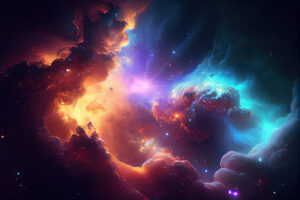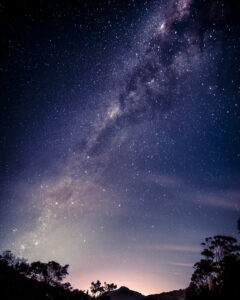Outline for Article:
- Introduction
- Overview of NASA’s recent Instagram post about the ‘Evil Eye’ galaxy.
- Importance and fascination regarding space images.
- The ‘Evil Eye’ Galaxy: A Distant Wonder
- Brief explanation of Coma Berenices constellation.
- Distance of the ‘Evil Eye’ galaxy from Earth.
- NASA’s Hubble Space Telescope and the Captured Image
- Role of the Hubble Space Telescope.
- Description of the stunning image taken in 2008.
- The Mystery Behind M64: ‘Black Eye’ or ‘Evil Eye’ Galaxy
- Spectacular features of Messier 64.
- Origin of its nicknames.
- Historical Context and Amateur Astronomer Fascination
- Messier’s cataloguing of M64 in the 18th century.
- Popularity among amateur astronomers.
- Public Reception on NASA’s Instagram Post
- Engagement metrics: likes and comments.
- Quotes and reactions from users expressing awe.
- Broader Significance of Space Discoveries
- Connection to the vastness of the Universe.
- Human humility and perspectives inspired by such images.
- NASA’s Continuous Unveiling of Cosmic Marvels
- Earlier revelations about the Milky Way.
- The James Webb Space Telescope’s role in discoveries.
- Conclusion
- Recap of the ‘Evil Eye’ galaxy revelation and its impact.
- Reflection on the human response to cosmic wonders.
Space exploration has always captivated humanity, offering glimpses of distant worlds and cosmic wonders that expand our understanding of the universe’s vastness. Recently, NASA shared an awe-inspiring image on its Instagram—a breathtaking capture of the ‘Evil Eye’ galaxy within the constellation Coma Berenices, located a staggering 17 million light-years away from Earth.
The mesmerizing image, taken by the NASA Hubble Space Telescope in 2008, showcases the ‘Black Eye’ or ‘Evil Eye’ galaxy, scientifically known as Messier 64 (M64). This galaxy is characterized by a striking dark band of absorbing cosmic dust in front of its luminous core, giving rise to its ominous yet fascinating monikers.

Exploring the Cosmic Distance and Telescope Technology
Comprehending the vastness of space becomes apparent when contemplating the distance of the ‘Evil Eye’ galaxy. Situated 17 million light-years away, this cosmic marvel exists as a distant speck in the grand tapestry of the universe. The Hubble Space Telescope, a pinnacle of modern astronomical technology, played a pivotal role in capturing this captivating image, revealing the enigmatic beauty of M64.
Unveiling the Mysteries of Messier 64
Messier 64 has been an object of fascination for astronomers, particularly amateur stargazers, owing to its distinctive appearance even through small telescopes. Catalogued in the 18th century by the French astronomer Messier, this galaxy has intrigued generations with its peculiar features, earning it the epithets of the ‘Black Eye’ or ‘Evil Eye’ galaxy.
Public Reception and Cosmic Reflections
NASA’s Instagram post featuring this cosmic spectacle garnered immense attention, amassing over 2 lakh likes and eliciting a cascade of comments from space enthusiasts. Users expressed awe, humility, and sheer admiration for the universe’s vastness, with remarks like “The Universe is so damn big” and “This obligates humans to be humble.”
Such revelations not only captivate our imagination but also remind us of our place in the grand scheme of the cosmos, evoking humility and wonder.
Continual Cosmic Revelations by NASA
This remarkable unveiling follows NASA’s earlier revelations about the Milky Way. The James Webb Space Telescope recently captured never-before-seen details of our galaxy’s heart, promising new insights into the universe’s early days.
In conclusion, NASA’s portrayal of the ‘Evil Eye’ galaxy is more than a mere image; it’s a window into the unfathomable beauty and mysteries of the cosmos. These revelations not only expand our scientific knowledge but also evoke a sense of wonder and humility in the face of the universe’s grandeur.

FAQs
- Q: How far is the ‘Evil Eye’ galaxy from Earth?
- A: The ‘Evil Eye’ galaxy, also known as Messier 64 (M64), is situated 17 million light-years away from Earth.
- Q: Who first catalogued Messier 64?
- A: The French astronomer Messier catalogued Messier 64 in the 18th century.
- Q: What are the distinctive features of the ‘Evil Eye’ galaxy?
- A: Messier 64 is characterized by a dark band of absorbing cosmic dust in front of its bright nucleus, earning it the nicknames ‘Black Eye’ or ‘Evil Eye’ galaxy.
- Q: What telescope captured the image of the ‘Evil Eye’ galaxy?
- A: The NASA Hubble Space Telescope captured the stunning image of Messier 64 in 2008.
- Q: What was the public reception to NASA’s Instagram post about the ‘Evil Eye’ galaxy?
- A: The post garnered over 2 lakh likes and numerous comments expressing awe, humility, and admiration for the cosmos.
Thanks for sharing. I read many of your blog posts, cool, your blog is very good.
thanks
Can you be more specific about the content of your article? After reading it, I still have some doubts. Hope you can help me.